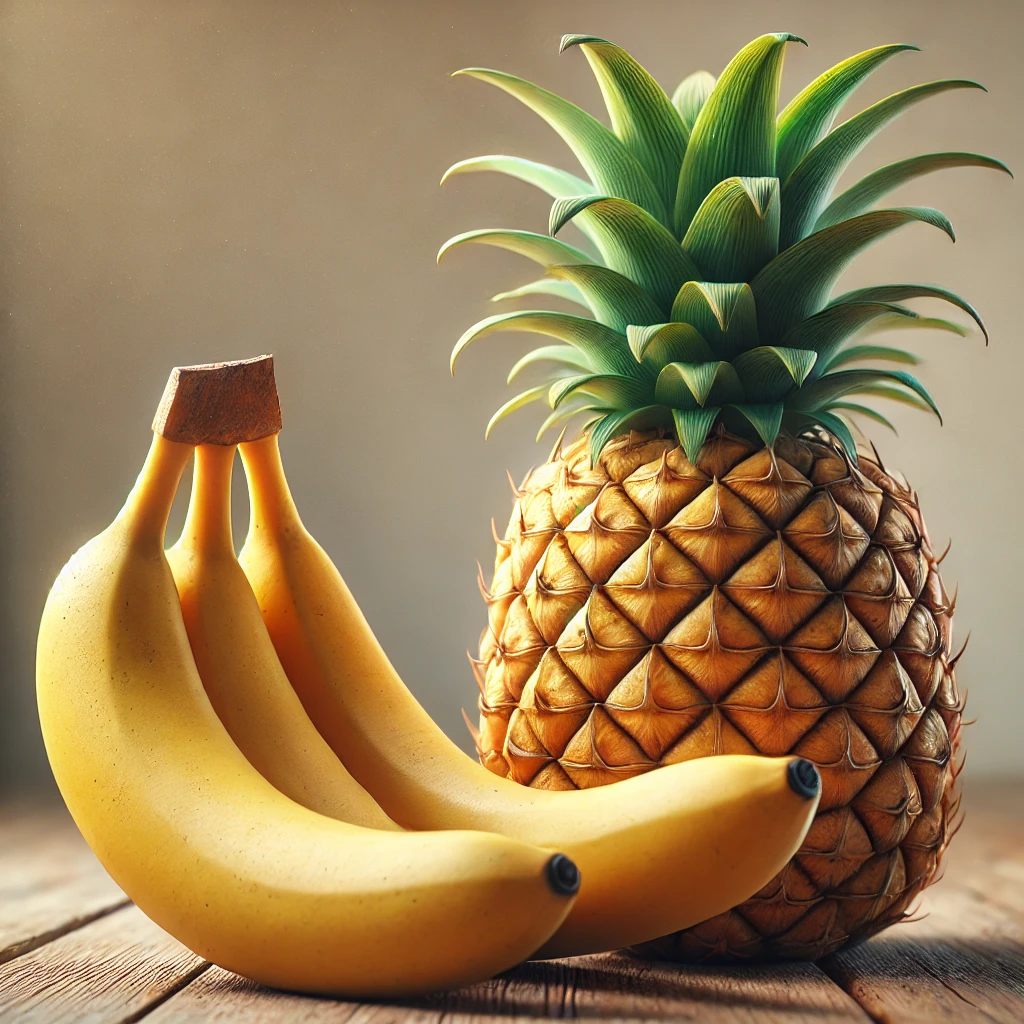Grafting Banana with Pineapple: A Revolutionary Technique for Amazing Fruit
Have you ever wondered what would happen if you combined the sweetness of a banana with the tangy flavor of a pineapple? While grafting bananas and pineapples together might sound like something out of a science fiction movie, it’s actually a fascinating technique that can yield unique and delicious fruit. In this guide, we’ll explore the concept of grafting banana and pineapple plants, the science behind it, and whether it’s possible to create a hybrid fruit. While this technique is more experimental than traditional, it’s a fun and innovative way to push the boundaries of gardening!
Can You Really Graft Bananas and Pineapples?
Before diving into the process, it’s important to understand the biology of these two plants:
- Bananas: Bananas grow from a rhizome (an underground stem) and are technically herbaceous plants, not trees.
- Pineapples: Pineapples are bromeliads that grow from a central stem and produce a single fruit per plant.
Grafting typically involves joining two plants of the same species or closely related species. Since bananas and pineapples belong to completely different plant families (Musaceae for bananas and Bromeliaceae for pineapples), traditional grafting isn’t feasible. However, there are creative ways to experiment with these plants to achieve unique results.
The Science Behind Grafting
Grafting works by joining the vascular tissues of two plants so they grow as one. This technique is commonly used with fruit trees like apples, citrus, and grapes to combine desirable traits, such as disease resistance or improved fruit quality. For grafting to be successful, the plants must be closely related.
While bananas and pineapples can’t be grafted in the traditional sense, you can experiment with other methods to combine their growth or create a shared growing environment. Here’s how you can try this innovative approach:
Step-by-Step Guide to Combining Banana and Pineapple Plants
1. Choose Healthy Plants
- Select a healthy banana plant and a pineapple plant with strong roots and vibrant leaves.
- Ensure both plants are disease-free and well-established.
2. Create a Shared Growing Environment
- Plant the banana and pineapple close together in a large container or garden bed.
- Use well-draining soil rich in organic matter to support both plants.
3. Encourage Symbiotic Growth
- As the plants grow, their root systems may intertwine, creating a symbiotic relationship where they share nutrients and water.
- Mulch around the plants to retain moisture and regulate soil temperature.
4. Experiment with Cross-Pollination
- While bananas and pineapples don’t naturally cross-pollinate, you can try hand-pollinating their flowers to see if any unique fruit develops.
- Use a small brush to transfer pollen from the banana flower to the pineapple flower, or vice versa.
5. Monitor Growth and Adjust Care
- Both plants require similar growing conditions: full sun, warm temperatures, and consistent watering.
- Fertilize regularly with a balanced fertilizer to support healthy growth.
Challenges and Considerations
While this technique is exciting, there are a few challenges to keep in mind:
- Different Growth Habits: Bananas grow tall and produce suckers, while pineapples remain low and produce a single fruit. Managing their growth in the same space can be tricky.
- Nutrient Competition: Both plants are heavy feeders and may compete for nutrients if not properly fertilized.
- Experimental Nature: This method is more about experimentation than guaranteed results. The likelihood of producing a true hybrid fruit is low, but the process can still be rewarding.
Alternative Approach: Growing Bananas and Pineapples Together
If grafting isn’t feasible, you can still grow bananas and pineapples together in a way that benefits both plants:
- Companion Planting: Plant pineapples around the base of a banana tree. The pineapple’s low growth habit complements the banana’s height, and the banana’s broad leaves provide shade for the pineapple.
- Nutrient Sharing: Both plants thrive in rich, well-draining soil. Use compost and organic fertilizers to ensure they get the nutrients they need.
- Pest Control: Pineapples can help deter pests that might affect bananas, and vice versa.
The Dream of a Banana-Pineapple Hybrid
While a true banana-pineapple hybrid isn’t possible through grafting, plant breeders are constantly working on creating new fruit varieties. Who knows? In the future, we might see a fruit that combines the best of both worlds. Until then, experimenting with growing bananas and pineapples together is a fun way to explore the possibilities of gardening.
Conclusion: Embrace the Experiment!
Grafting bananas with pineapples may not be a traditional gardening technique, but it’s a great way to think outside the box and explore the potential of plant combinations. Whether you’re growing them together or simply enjoying their individual flavors, bananas and pineapples are both rewarding plants to cultivate.
So, why not give it a try? Plant a banana and a pineapple side by side, care for them, and see what happens. Even if you don’t end up with a hybrid fruit, you’ll gain valuable gardening experience and maybe even inspire others to try something new. Happy gardening!
